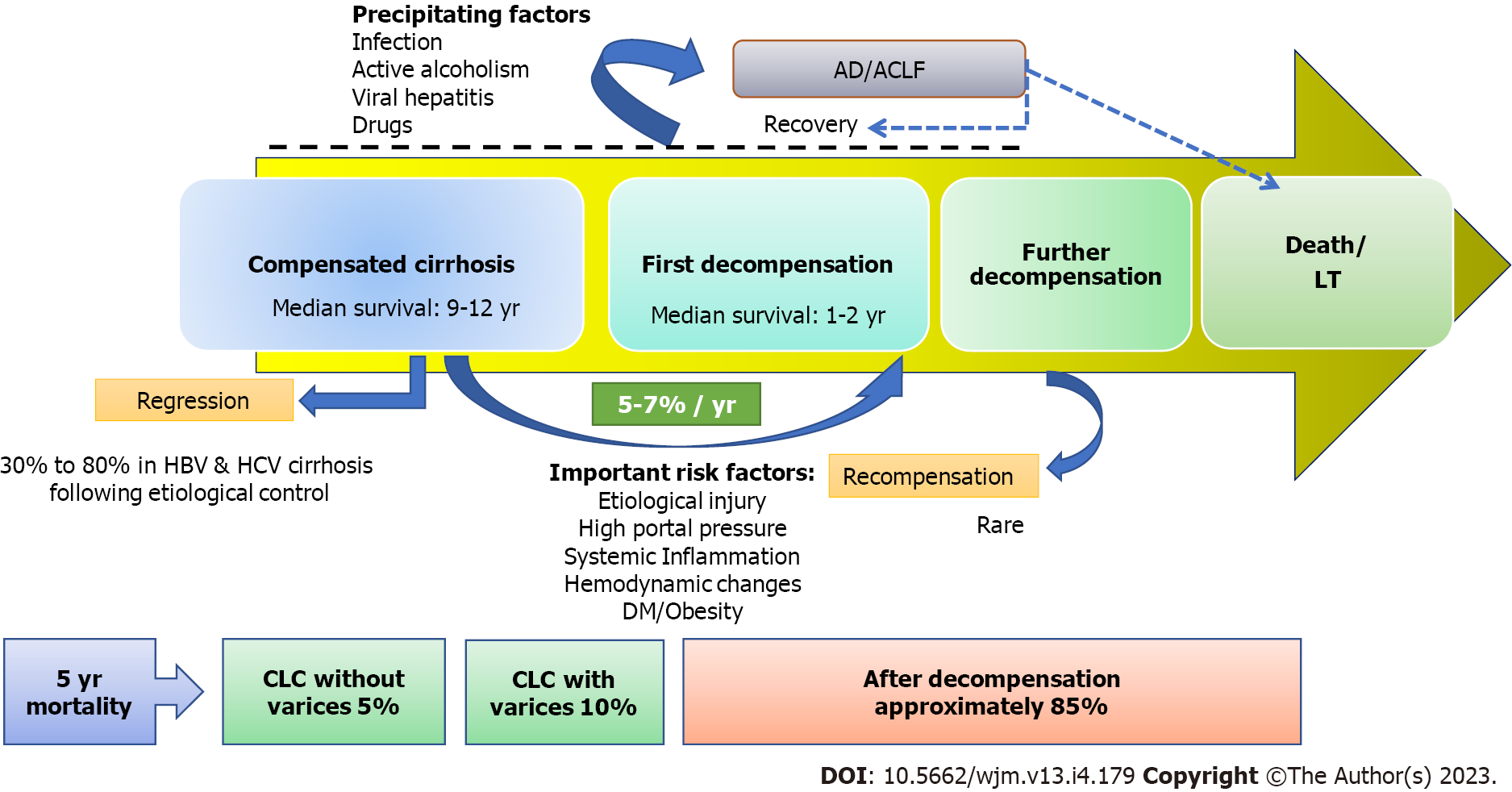Copyright
©The Author(s) 2023.
World J Methodol. Sep 20, 2023; 13(4): 179-193
Published online Sep 20, 2023. doi: 10.5662/wjm.v13.i4.179
Published online Sep 20, 2023. doi: 10.5662/wjm.v13.i4.179
Figure 1 Natural course of patients with compensated liver cirrhosis.
The natural progression of cirrhosis is characterised by a continuum from an asymptomatic compensated phase to a symptomatic decompensation phase. The rate of transition from a compensated to a decompensated stage is about 5%-7% each year. The 5-year mortality rate in compensated cirrhosis without or with varices is 5% and 10%, respectively. There are several known factors associated with decompensation such as high portal pressure, persistent etiological injury, systemic inflammation, and haemodynamic alterations. In addition, several types of triggering events, such as bacterial infection, alcohol, viral hepatitis, or medications, may cause acute decompensation (AD) and acute-on-chronic liver failure (ACLF). Prompt and effective control of etiological factors are associated not only with regression of compensated cirrhosis but also with recompensation of decompensated cirrhosis (data adapted from references 3, 6, 18, and 31). CLC: Compensated liver cirrhosis; DM: Diabetes mellitus; HBV: Hepatitis B virus; HCV: Hepatitis C virus; LT: Liver transplantation.
- Citation: Kumar R, Kumar S, Prakash SS. Compensated liver cirrhosis: Natural course and disease-modifying strategies. World J Methodol 2023; 13(4): 179-193
- URL: https://www.wjgnet.com/2222-0682/full/v13/i4/179.htm
- DOI: https://dx.doi.org/10.5662/wjm.v13.i4.179













